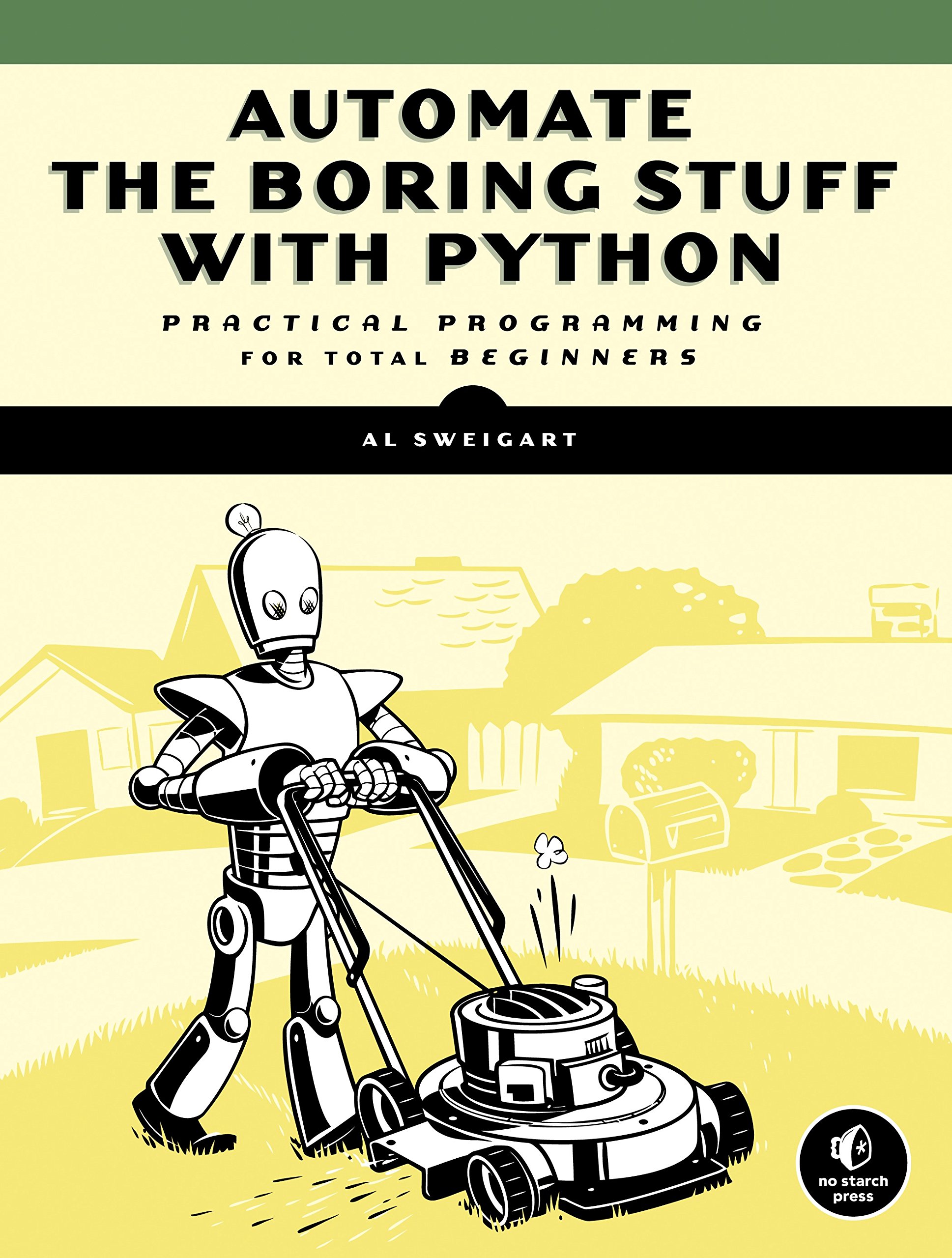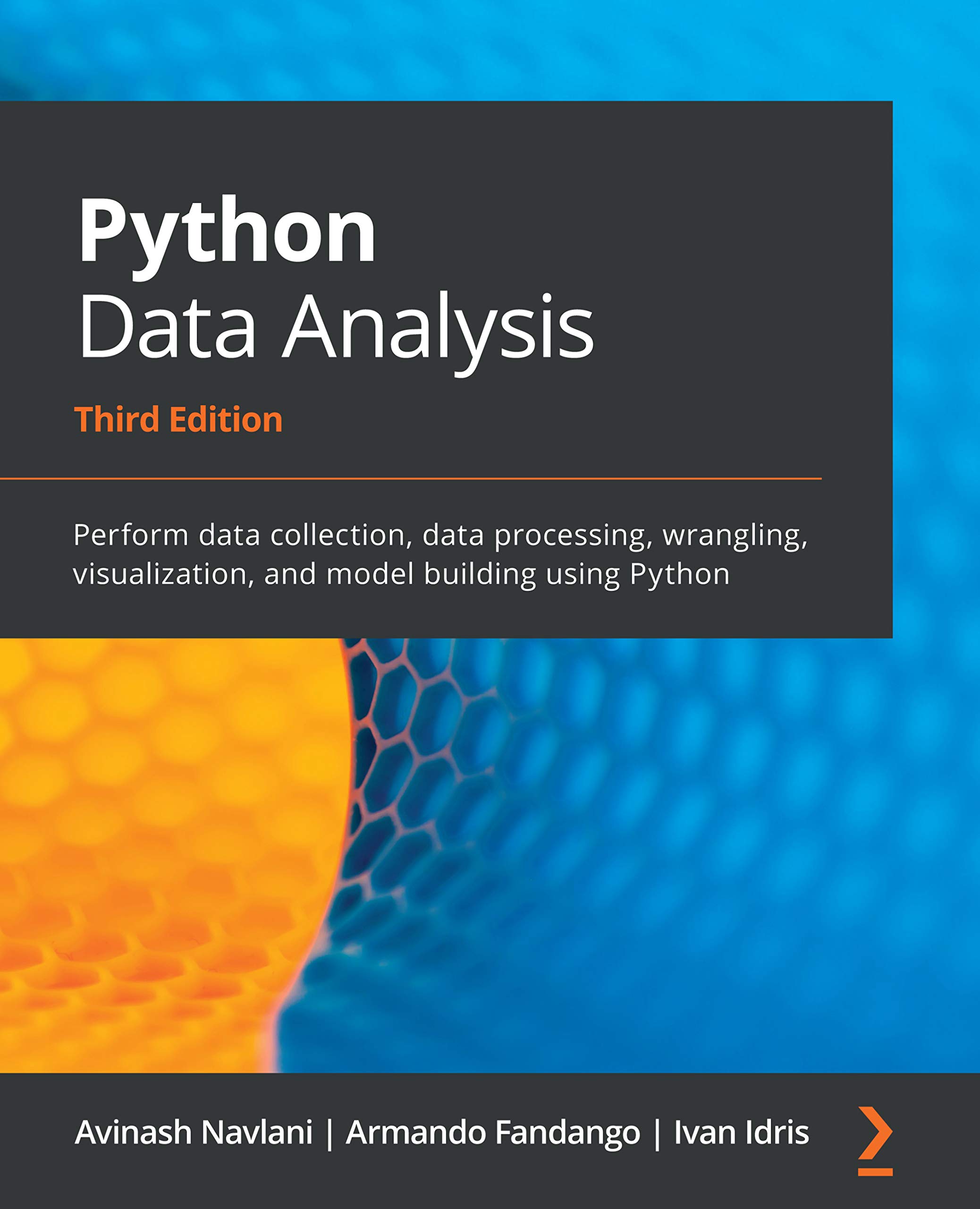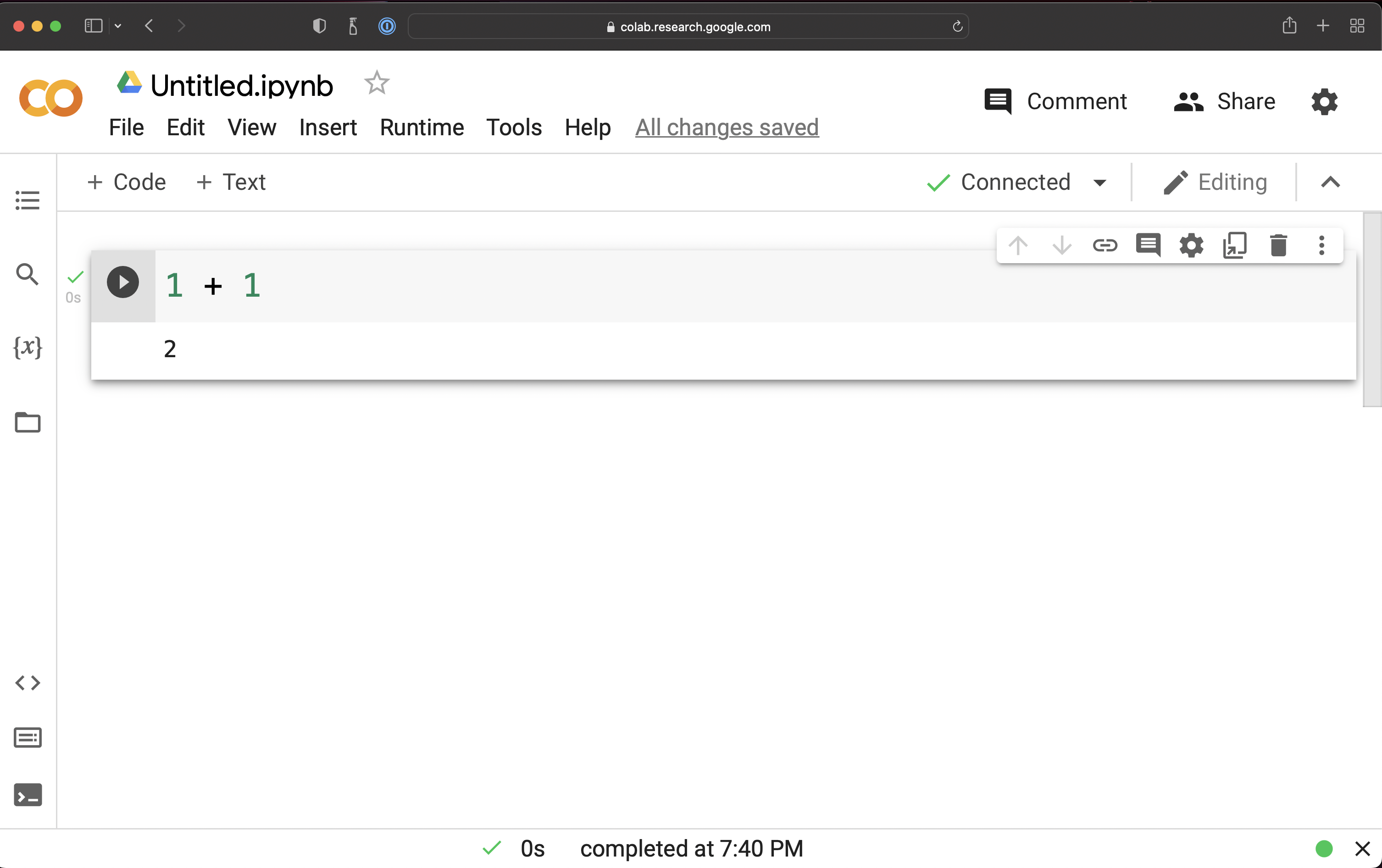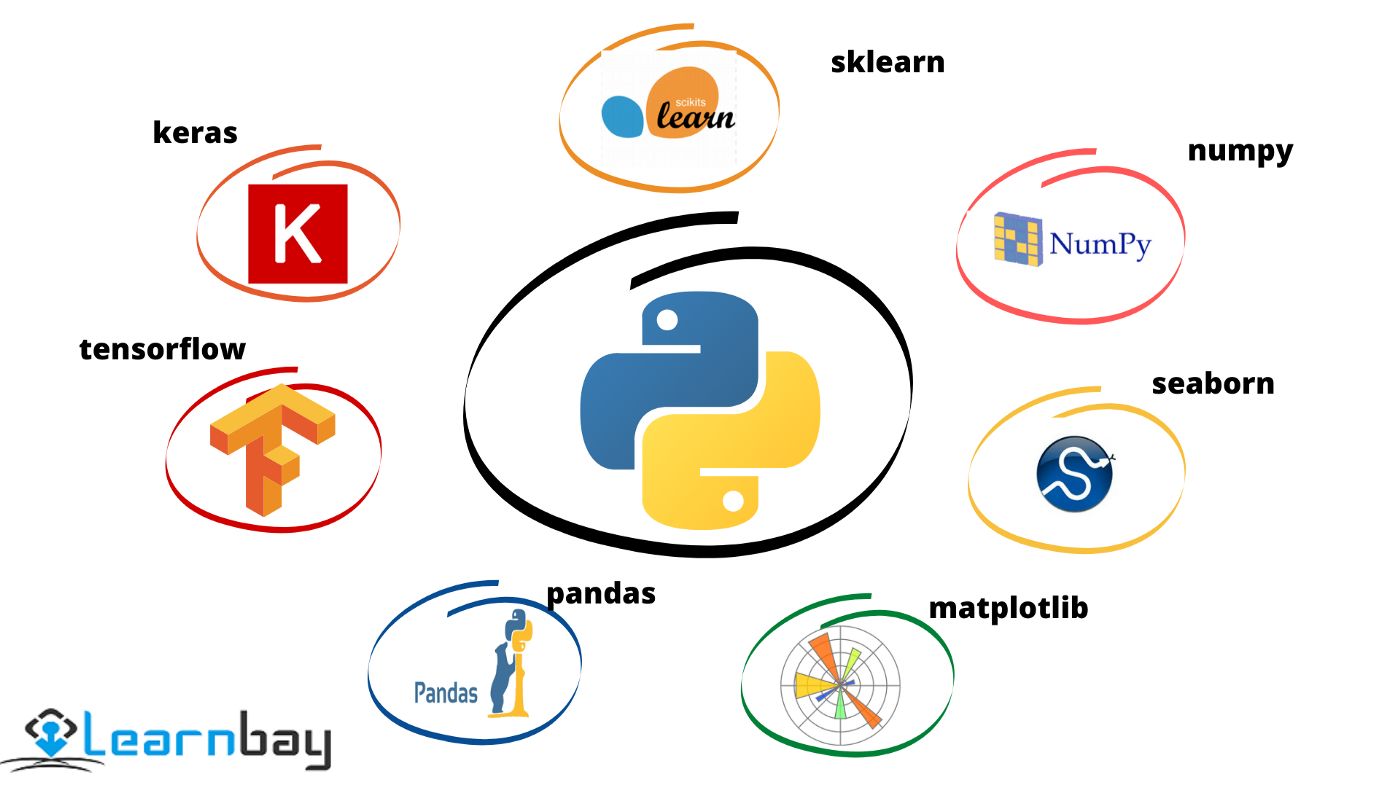1 + 23ACTL3143 & ACTL5111 Deep Learning for Actuaries
A recording covering (most of) this Python content:

It is general purpose language
Python powers:
Python is on Mars.

…[T]he entire machine learning and data science industry has been dominated by these two approaches: deep learning and gradient boosted trees… Users of gradient boosted trees tend to use Scikit-learn, XGBoost, or LightGBM. Meanwhile, most practitioners of deep learning use Keras, often in combination with its parent framework TensorFlow. The common point of these tools is they’re all Python libraries: Python is by far the most widely used language for machine learning and data science.
In R you can run:
pchisq(3, 10)In Python it is
from scipy import stats
stats.chi2(10).cdf(3)

1 + 23x = 1
x + 2.03.0type(2.0)floattype(1), type(x)(int, int)does_math_work = 1 + 1 == 2
print(does_math_work)
type(does_math_work)Trueboolcontradiction = 1 != 1
contradictionFalseIf we want to add 2 to a variable x:
x = 1
x = x + 2
x3x = 1
x += 2
x3Same for:
x -= 2 : take 2 from the current value of x ,x *= 2 : double the current value of x,x /= 2 : halve the current value of x.name = "Patrick"
surname = "Laub"coffee = "This is Patrick's coffee"
quote = 'And then he said "I need a coffee!"'name + surname'PatrickLaub'greeting = f"Hello {name} {surname}"
greeting'Hello Patrick Laub'"Patrick" in greetingTrueand & orname = "Patrick"
surname = "Laub"
name.istitle() and surname.istitle()Truefull_name = "Dr Patrick Laub"
full_name.startswith("Dr ") or full_name.endswith(" PhD")TrueThe dot is used denote methods, it can’t be used inside a variable name.
i.am.an.unfortunate.R.users = True--------------------------------------------------------------------------- NameError Traceback (most recent call last) Cell In[17], line 1 ----> 1 i.am.an.unfortunate.R.users = True NameError: name 'i' is not defined
help to get more detailshelp(name.istitle)Help on built-in function istitle:
istitle() method of builtins.str instance
Return True if the string is a title-cased string, False otherwise.
In a title-cased string, upper- and title-case characters may only
follow uncased characters and lowercase characters only cased ones.
print(f"Five squared is {5*5} and five cubed is {5**3}")
print("Five squared is {5*5} and five cubed is {5**3}")Five squared is 25 and five cubed is 125
Five squared is {5*5} and five cubed is {5**3}Use f-strings and avoid the older alternatives:
print(f"Hello {name} {surname}")
print("Hello " + name + " " + surname)
print("Hello {} {}".format(name, surname))
print("Hello %s %s" % (name, surname))Hello Patrick Laub
Hello Patrick Laub
Hello Patrick Laub
Hello Patrick Laubdigit = 3
digit3type(digit)intnum = float(digit)
num3.0type(num)floatnum_str = str(num)
num_str'3.0'What is the output of:
x = 1
y = 1.0
print(f"{x == y} and {type(x) == type(y)}")True and FalseWhat would you add before line 3 to get “True and True”?
x = 1
y = 1.0
x = float(x) # or y = int(y)
print(f"{x == y} and {type(x) == type(y)}")True and Truedesires = ["Coffee", "Cake", "Sleep"]
desires['Coffee', 'Cake', 'Sleep']len(desires)3desires[0]'Coffee'desires[-1]'Sleep'desires[2] = "Nap"
desires['Coffee', 'Cake', 'Nap']print([0, 1, 2])
desires[0, 1, 2]['Coffee', 'Cake', 'Nap']desires[0:2]['Coffee', 'Cake']desires[0:1]['Coffee']desires[:2]['Coffee', 'Cake']desires[1.0]--------------------------------------------------------------------------- TypeError Traceback (most recent call last) Cell In[37], line 1 ----> 1 desires[1.0] TypeError: list indices must be integers or slices, not float
desires[: len(desires) / 2]--------------------------------------------------------------------------- TypeError Traceback (most recent call last) Cell In[38], line 1 ----> 1 desires[: len(desires) / 2] TypeError: slice indices must be integers or None or have an __index__ method
len(desires) / 2, len(desires) // 2(1.5, 1)desires[: len(desires) // 2]['Coffee']desires = ["Coffee", "Cake", "Sleep"]
desires.append("Gadget")
desires['Coffee', 'Cake', 'Sleep', 'Gadget']desires.pop()'Gadget'desires['Coffee', 'Cake', 'Sleep']desires.sort()
desires['Cake', 'Coffee', 'Sleep']desires[3] = "Croissant"--------------------------------------------------------------------------- IndexError Traceback (most recent call last) Cell In[45], line 1 ----> 1 desires[3] = "Croissant" IndexError: list assignment index out of range
Nonedesires = ["Coffee", "Cake", "Sleep", "Gadget"]
sorted_list = desires.sort()
sorted_listtype(sorted_list)NoneTypesorted_list is NoneTruebool(sorted_list)Falsedesires = ["Coffee", "Cake", "Sleep", "Gadget"]
sorted_list = sorted(desires)
print(desires)
sorted_list['Coffee', 'Cake', 'Sleep', 'Gadget']['Cake', 'Coffee', 'Gadget', 'Sleep']weather = ("Sunny", "Cloudy", "Rainy")
print(type(weather))
print(len(weather))
print(weather[-1])<class 'tuple'>
3
Rainyweather.append("Snowy")--------------------------------------------------------------------------- AttributeError Traceback (most recent call last) Cell In[52], line 1 ----> 1 weather.append("Snowy") AttributeError: 'tuple' object has no attribute 'append'
weather[2] = "Snowy"--------------------------------------------------------------------------- TypeError Traceback (most recent call last) Cell In[53], line 1 ----> 1 weather[2] = "Snowy" TypeError: 'tuple' object does not support item assignment
using_brackets_in_math = (2 + 4) * 3
using_brackets_to_simplify = (1 + 1 == 2)failure_of_atuple = ("Snowy")
type(failure_of_atuple)strhappy_solo_tuple = ("Snowy",)
type(happy_solo_tuple)tuplecheeky_solo_list = ["Snowy"]
type(cheeky_solo_list)listphone_book = {"Patrick": "+61 1234", "Café": "(02) 5678"}
phone_book["Patrick"]'+61 1234'phone_book["Café"] = "+61400 000 000"
phone_book{'Patrick': '+61 1234', 'Café': '+61400 000 000'}phone_book.keys()dict_keys(['Patrick', 'Café'])phone_book.values()dict_values(['+61 1234', '+61400 000 000'])factorial = {0: 1, 1: 1, 2: 2, 3: 6, 4: 24, 5: 120, 6: 720, 7: 5040}
factorial[4]24animals = ["dog", "cat", "bird"]
animals.append("teddy bear")
animals.pop()
animals.pop()
animals.append("koala")
animals.append("kangaroo")
print(f"{len(animals)} and {len(animals[-2])}")4 and 5if and elseage = 50if age >= 30:
print("Gosh you're old")Gosh you're oldif age >= 30:
print("Gosh you're old")
else:
print("You're still young")Gosh you're oldif age >= 30:
print("Gosh you're old")
else:
print("You're still young")Cell In[67], line 4 print("You're still young") ^ IndentationError: expected an indented block after 'else' statement on line 3
Watch out for mixing tabs and spaces!
age = 16
if age < 18:
friday_evening_schedule = "School things"
if age < 30:
friday_evening_schedule = "Party 🥳🍾"
if age >= 30:
friday_evening_schedule = "Work"print(friday_evening_schedule)Party 🥳🍾elifage = 16
if age < 18:
friday_evening_schedule = "School things"
elif age < 30:
friday_evening_schedule = "Party 🥳🍾"
else:
friday_evening_schedule = "Work"
print(friday_evening_schedule)School thingsfor Loopsdesires = ["coffee", "cake", "sleep"]
for desire in desires:
print(f"Patrick really wants a {desire}.")Patrick really wants a coffee.
Patrick really wants a cake.
Patrick really wants a sleep.for i in range(3):
print(i)0
1
2for i in range(3, 6):
print(i)3
4
5range(5)range(0, 5)type(range(5))rangelist(range(5))[0, 1, 2, 3, 4]for loopsfor i, desire in enumerate(desires):
print(f"Patrick wants a {desire}, it is priority #{i+1}.")Patrick wants a coffee, it is priority #1.
Patrick wants a cake, it is priority #2.
Patrick wants a sleep, it is priority #3.desires = ["coffee", "cake", "nap"]
times = ["in the morning", "at lunch", "during a boring lecture"]
for desire, time in zip(desires, times):
print(f"Patrick enjoys a {desire} {time}.")Patrick enjoys a coffee in the morning.
Patrick enjoys a cake at lunch.
Patrick enjoys a nap during a boring lecture.[x**2 for x in range(10)][0, 1, 4, 9, 16, 25, 36, 49, 64, 81][x**2 for x in range(10) if x % 2 == 0][0, 4, 16, 36, 64]They can get more complicated:
[x * y for x in range(4) for y in range(4)][0, 0, 0, 0, 0, 1, 2, 3, 0, 2, 4, 6, 0, 3, 6, 9][[x * y for x in range(4)] for y in range(4)][[0, 0, 0, 0], [0, 1, 2, 3], [0, 2, 4, 6], [0, 3, 6, 9]]but I’d recommend just using for loops at that point.
Say that we want to simulate (X \,\mid\, X \ge 100) where X \sim \mathrm{Pareto}(1). Assuming we have simulate_pareto, a function to generate \mathrm{Pareto}(1) variables:
samples = []
while len(samples) < 5:
x = simulate_pareto()
if x >= 100:
samples.append(x)
samples[125.28600493316272,
186.04974709289712,
154.45723763510398,
101.08310878885993,
2852.8305399214996]while True:
user_input = input(">> What would you like to do? ")
if user_input == "order cake":
print("Here's your cake! 🎂")
elif user_input == "order coffee":
print("Here's your coffee! ☕️")
elif user_input == "quit":
break>> What would you like to do? order cake
Here's your cake! 🎂
>> What would you like to do? order coffee
Here's your coffee! ☕️
>> What would you like to do? order cake
Here's your cake! 🎂
>> What would you like to do? quitWhat does this print out?
if 1 / 3 + 1 / 3 + 1 / 3 == 1:
if 2**3 == 6:
print("Math really works!")
else:
print("Math sometimes works..")
else:
print("Math doesn't work")Math sometimes works..What does this print out?
count = 0
for i in range(1, 10):
count += i
if i > 3:
break
print(count)10count = 0
for i in range(1, 10):
count += i
print(f"After i={i} count={count}")
if i > 3:
breakAfter i=1 count=1
After i=2 count=3
After i=3 count=6
After i=4 count=10def add_one(x):
return x + 1
def greet_a_student(name):
print(f"Hi {name}, welcome to the AI class!")add_one(10)11greet_a_student("Josephine")Hi Josephine, welcome to the AI class!greet_a_student("Joseph")Hi Joseph, welcome to the AI class!Here, name is a parameter and the value supplied is an argument.
Assuming we have simulate_standard_normal, a function to generate \mathrm{Normal}(0, 1) variables:
def simulate_normal(mean=0, std=1):
return mean + std * simulate_standard_normal()simulate_normal() # same as 'simulate_normal(0, 1)'0.47143516373249306simulate_normal(1_000) # same as 'simulate_normal(1_000, 1)'998.8090243052935We’ll cover random numbers next week (using numpy).
simulate_normal(mean=1_000) # same as 'simulate_normal(1_000, 1)'1001.4327069684261simulate_normal(std=1_000) # same as 'simulate_normal(0, 1_000)'-312.6518960917129simulate_normal(10, std=0.001) # same as 'simulate_normal(10, 0.001)'9.999279411266635simulate_normal(std=10, 1_000)Cell In[100], line 1 simulate_normal(std=10, 1_000) ^ SyntaxError: positional argument follows keyword argument
E.g. to fit a Keras model, we use the .fit method:
model.fit(x=None, y=None, batch_size=None, epochs=1, verbose='auto',
callbacks=None, validation_split=0.0, validation_data=None,
shuffle=True, class_weight=None, sample_weight=None,
initial_epoch=0, steps_per_epoch=None, validation_steps=None,
validation_batch_size=None, validation_freq=1,
max_queue_size=10, workers=1, use_multiprocessing=False)Say we want all the defaults except changing use_multiprocessing=True:
model.fit(None, None, None, 1, 'auto', None, 0.0, None, True, None,
None, 0, None, None, None, 1, 10, 1, True)but it is much nicer to just have:
model.fit(use_multiprocessing=True)What does the following print out?
def get_half_of_list(numbers, first=True):
if first:
return numbers[: len(numbers) // 2]
else:
return numbers[len(numbers) // 2 :]
nums = [1, 2, 3, 4, 5, 6]
chunk = get_half_of_list(nums, False)
second_chunk = get_half_of_list(chunk)
print(second_chunk)[4]f"nums ~> {nums[:len(nums)//2]} and {nums[len(nums)//2:]}"'nums ~> [1, 2, 3] and [4, 5, 6]'f"chunk ~> {chunk[:len(chunk)//2]} and {chunk[len(chunk)//2:]}"'chunk ~> [4] and [5, 6]'def limits(numbers):
return min(numbers), max(numbers)
limits([1, 2, 3, 4, 5])(1, 5)type(limits([1, 2, 3, 4, 5]))tuplemin_num, max_num = limits([1, 2, 3, 4, 5])
print(f"The numbers are between {min_num} and {max_num}.")The numbers are between 1 and 5._, max_num = limits([1, 2, 3, 4, 5])
print(f"The maximum is {max_num}.")The maximum is 5.print(f"The maximum is {limits([1, 2, 3, 4, 5])[1]}.")The maximum is 5.lims = limits([1, 2, 3, 4, 5])
smallest_num = lims[0]
largest_num = lims[1]
print(f"The numbers are between {smallest_num} and {largest_num}.")The numbers are between 1 and 5.smallest_num, largest_num = limits([1, 2, 3, 4, 5])
print(f"The numbers are between {smallest_num} and {largest_num}.")The numbers are between 1 and 5.This doesn’t just work for functions with multiple return values:
RESOLUTION = (1920, 1080)
WIDTH, HEIGHT = RESOLUTION
print(f"The resolution is {WIDTH} wide and {HEIGHT} tall.")The resolution is 1920 wide and 1080 tall.def is_positive(x):
print("Called is_positive")
return x > 0
def is_negative(x):
print("Called is_negative")
return x < 0
x = 10x_is_positive = is_positive(x)
x_is_positiveCalled is_positiveTruex_is_negative = is_negative(x)
x_is_negativeCalled is_negativeFalsex_not_zero = is_positive(x) or is_negative(x)
x_not_zeroCalled is_positiveTrueimport os
import timetime.sleep(0.1)os.getlogin()'plaub'os.getcwd()'/home/plaub/Dropbox/Lecturing/ACTL3143/DeepLearningForActuaries/Artificial-Intelligence'from os import getcwd, getlogin
from time import sleepsleep(0.1)getlogin()'plaub'getcwd()'/home/plaub/Dropbox/Lecturing/ACTL3143/DeepLearningForActuaries/Artificial-Intelligence'from time import time
start_time = time()
counting = 0
for i in range(1_000_000):
counting += 1
end_time = time()
elapsed = end_time - start_time
print(f"Elapsed time: {elapsed} secs")Elapsed time: 0.08033871650695801 secs
asimport pandas
pandas.DataFrame(
{
"x": [1, 2, 3],
"y": [4, 5, 6],
}
)| x | y | |
|---|---|---|
| 0 | 1 | 4 |
| 1 | 2 | 5 |
| 2 | 3 | 6 |
import pandas as pd
pd.DataFrame(
{
"x": [1, 2, 3],
"y": [4, 5, 6],
}
)| x | y | |
|---|---|---|
| 0 | 1 | 4 |
| 1 | 2 | 5 |
| 2 | 3 | 6 |
Want keras.models.Sequential().
import keras
model = keras.models.Sequential()Alternatives using from:
from keras import models
model = models.Sequential()from keras.models import Sequential
model = Sequential()Example: how to sort strings by their second letter?
names = ["Josephine", "Patrick", "Bert"]If you try help(sorted) you’ll find the key parameter.
for name in names:
print(f"The length of '{name}' is {len(name)}.")The length of 'Josephine' is 9.
The length of 'Patrick' is 7.
The length of 'Bert' is 4.sorted(names, key=len)['Bert', 'Patrick', 'Josephine']Example: how to sort strings by their second letter?
names = ["Josephine", "Patrick", "Bert"]If you try help(sorted) you’ll find the key parameter.
def second_letter(name):
return name[1]for name in names:
print(f"The second letter of '{name}' is '{second_letter(name)}'.")The second letter of 'Josephine' is 'o'.
The second letter of 'Patrick' is 'a'.
The second letter of 'Bert' is 'e'.sorted(names, key=second_letter)['Patrick', 'Bert', 'Josephine']Example: how to sort strings by their second letter?
names = ["Josephine", "Patrick", "Bert"]If you try help(sorted) you’ll find the key parameter.
sorted(names, key=lambda name: name[1])['Patrick', 'Bert', 'Josephine']Don’t use lambda as a variable name! You commonly see lambd or lambda_ or λ.
Example, opening a file:
Most basic way is:
f = open("haiku1.txt", "r")
print(f.read())
f.close()Chaos reigns within.
Reflect, repent, and reboot.
Order shall return.Instead, use:
with open("haiku2.txt", "r") as f:
print(f.read())The Web site you seek
Cannot be located, but
Countless more exist.from watermark import watermark
print(watermark(python=True, packages="keras,matplotlib,numpy,pandas,seaborn,scipy,torch,tensorflow,tf_keras"))Python implementation: CPython
Python version : 3.11.12
IPython version : 9.3.0
keras : 3.8.0
matplotlib: 3.10.0
numpy : 2.0.2
pandas : 2.2.2
seaborn : 0.13.2
scipy : 1.15.3
torch : 2.6.0+cu124
tensorflow: 2.18.0
tf_keras : 2.18.0
If you came from C (i.e. are a joint computer science student), and were super interested in Python’s internals, maybe you’d be interested in this How variables work in Python video.
helppip install ...rangetype